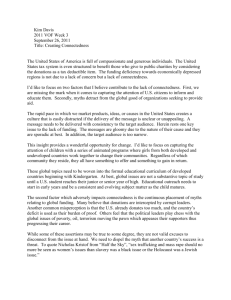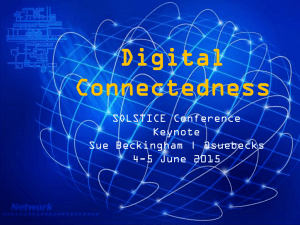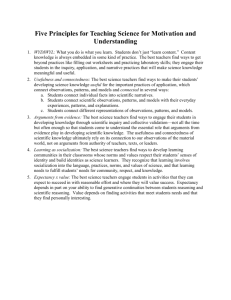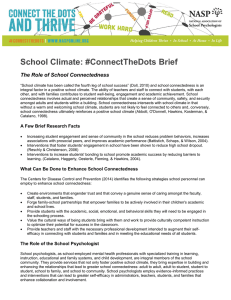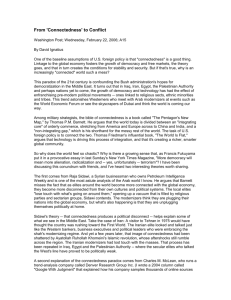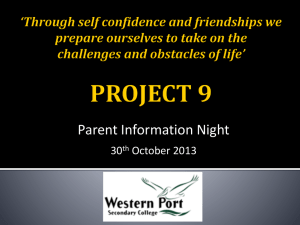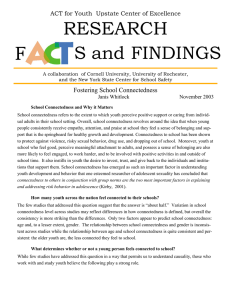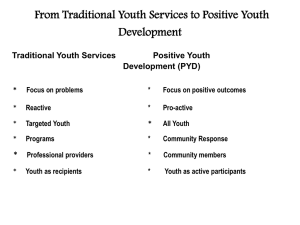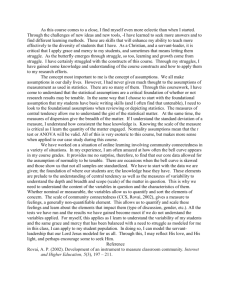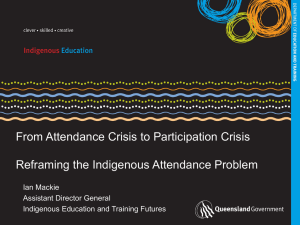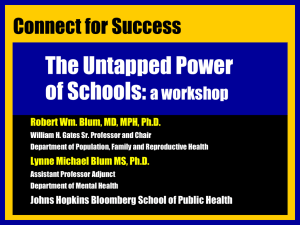Word 63KB - Community Services
advertisement
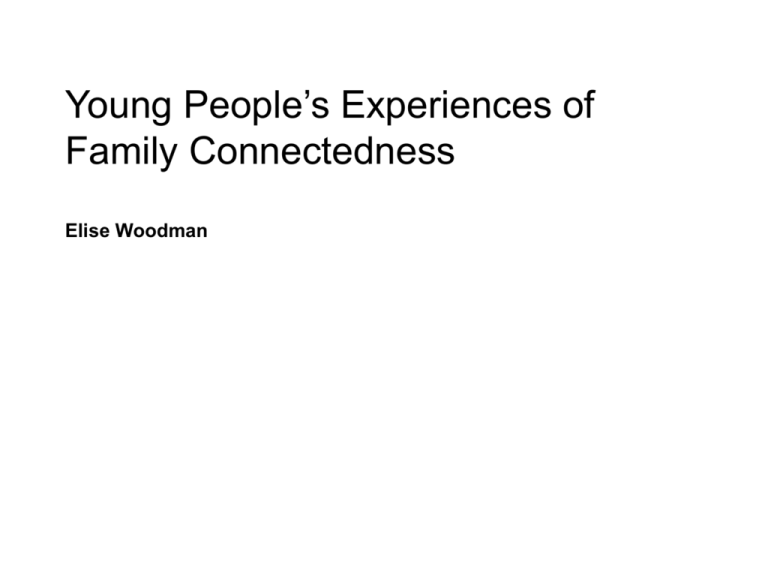
Young People’s Experiences of Family Connectedness Elise Woodman Presentation Outline The research context How the research was conducted Key themes Findings and recommendations Why research this area? Concerns about the extent of mental health issues experienced by young people Family connectedness well established as an important factor for wellbeing connectedness: “the family’s sense of belonging and being psychologically close in ways perceived and defined by the adolescent” (Crespo et al., 2010, p. 1394). Family Limited qualitative research on what things actually help young people feel connected to family Research Question How do young people understand and experience family connectedness? Key Priorities Recognising the value of young people’s perspectives Valued Use in their own right as competent social actors of a young person’s reference group Systems Theory Person-in-environment social work perspective Consideration of the impact of the broader context on families and young people Qualitative Methodology young people’s experiences of family connectedness in depth Explore Add greater insights on connectedness to the current literature Who I spoke to 31 young people 13 females, 18 males From 23 4 schools participants lived with both biological parents 7 participants from separated families 6 participants identified with cultures other than Australian 5 participants spoke 2 languages at home Factors important for family connectedness: Global Themes Being present and engaged in family life Having Young things in common people feeling valued Connections over time Factors that can affect family connectedness: Global themes Family dynamics including parent relationships, level of family stress and young people’s participation Factors outside the family such as work pressures and school Insights into Young People and Families Valuing the basics Valuing young people and their insights Recognising unique experiences and family contexts Variety of supporters Starting early Considering the broader social context Individualism Support surrounding families Time, work expectations and materialism Stress and busy lives What does all this mean for how we work with families? Recommendations for: Parents Young people Schools Practitioners For Parents Spend time with young people, eat dinner as a family, and listen to what young people have to say Remember family is of ongoing importance for young people despite increasing peer relationships Value young people for their individuality and avoid sibling comparisons Respect young people as equal and important members of the family with valuable opinions Consider ways to manage and reduce family stress For Parents Connect with children as early as possible Adapt their parenting as young people mature Remember that young people value boundaries and parents showing interest in their lives (even if they tell you to stop nagging them) Balance boundaries with appropriate freedom and trust Consider the impact of their family’s technology use on connectedness For Young People Open communication Showing interest in parent’s interests Considering impact of outside activities and technology use Prioritising family time Communicate needs Consider their role in connectedness For Schools Safe environments Parent education on family connectedness Supported by research findings and visual presentation of themes Additional risk support for those at Practitioners who work with young people and families Assist efforts to support connectedness and wellbeing Theme map as an assessment and therapeutic tool Evidence base to support social work interventions Flexible approach to working with families young people’s expertise and individual circumstances Recognise Consider the impact of the broader environment Conclusions Support efforts to understand and build family connectedness More detailed insights into what family connectedness looks like and how to achieve it Key themes to assist with parent education Importance of talking to young people Considering broader social pressures Questions
